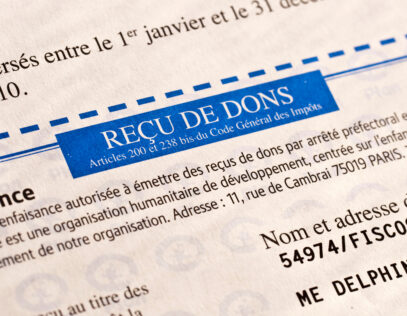Functional Analysis: How to Construct the Heart of Your Transfer Pricing Documentation

Your multinational enterprise’s (MNE) operations are likely to be highly integrated across jurisdictional borders, with functions, assets, and risks shared by multiple entities. This will make your functional analysis—the cornerstone of your transfer pricing documentation–both more difficult and more important. The functional analysis offers the opportunity to tell the story of your MNE one transaction at a time. When delineating a transaction, you may find that one entity performs a particular function, but that the risk in the transaction is borne by another entity. One entity may carry legal risk while another carries financial risk. Your functional analysis will highlight these nuances, identify who is benefiting from what, and determine the appropriate compensation. Once you’ve put these puzzle pieces together, the rest of your transfer pricing documentation should fall neatly into place.
OECD guidelines recommend that a “brief written functional analysis” be included with your transfer pricing master file and that a “detailed comparability and functional analysis” be included in your local file. Requirements differ by jurisdiction, of course, and guidelines are not rules, but you ignore that advice at your own peril. Just ask the (anonymous) Danish taxpayer in Denmark v. H Borrower and Lender A/S who received these shiver-inducing reprimands from the National Tax Tribunal in January of 2021:
The lack of functional analysis for H4 in the TP documentation means, in the opinion of the National Tax Tribunal, that it cannot be considered to be in accordance with the arm’s length principle.
and
The fact that the company has entered into different contractual obligations for the two cash flows is given less weight due to the lack of a functional analysis.
To avoid the fate of H Borrow and Lender A/S you’ll want your documentation to be thoroughly supported by a functional analysis—the sole part of your documentation that determines where value is created amongst entities. Your task is to disentangle who does what, where, with what resources, and at what risk. If you are at a multinational with a typically sprawling organizational chart, that may seem a daunting task. But those efforts will have a big pay-off: A functional analysis (or FAR analysis) may be recommended by the OECD and required by some tax authorities, but the biggest beneficiary will be you, the MNE. A solid functional analysis establishes functions performed by entities and then characterizes them, setting you up to select reliable comparables characterized the same way—e.g., manufacturer, distributor, sales agent, and so on. Those characterizations are also key to determining the most appropriate transfer pricing method for your transaction—hardly a small thing given that transfer pricing methodology is commonly challenged by tax authorities. That method, in turn, will help determine whether the profits attributed to each of your entities in your controlled transaction is appropriate to the functions performed, assets employed, and risks assumed. So, where do you begin?
“Functional analysis is the cornerstone of your transfer pricing process and a chance to tell the story of your multinational enterprise.”
What Have You Done for Me Lately? The Functions Performed
Your functional analysis will identify and describe the activities performed by each of the parties in a controlled transaction. So, you’ll need to determine which departments and which of your colleagues are most involved, be it product designers, marketing gurus, logistics experts, etc. You’ll need to pay special attention to where those colleagues are located to help determine which entities play a role in each activity. Your analysis will answer the question who does what and to what degree, building a foundation for the rest of your transfer pricing work. Summarize your findings in table form.
| Functions | US HQ | Mexico subsidiary |
| Marketing | Yes | Yes |
| Manufacturing | No | Yes |
| Sales | Yes | Yes |
| Warehouse operations | No | Yes |
Where both entities in a transaction are involved in the same function, you will determine to what extent each has contributed. If, for example, you are considering the marketing function for a product designed in the U.S. and sold in Mexico, you may start by checking how many marketing experts you have at each location. If there is no marketing department in Mexico, you can ascribe 100% of the function to the U.S. If, however, both entities have marketing personnel, you may need to make an old-school phone call: Ring your colleagues in U.S. marketing and ask them how much of their time is dedicated to Mexico. You only need to consider “economically significant” activities—those that materially affect the price charged or profit earned in a transaction (use your judgment).
This assessment can be summarized on your report in a “tick chart”—again in table form, but with a system of checks to indicate the relative contribution of each entity. These assessments are qualitative and not meant to be overly precise. In the example below, the two checks given to the Mexico entity for marketing does not mean that its contribution is twice that of the U.S. entity, just that it’s more. And the functions will have differing levels of significance, so three checks for sales might be more important than three checks for manufacturing, or vice versa. Your judgment, informed by interviews with personnel, questionnaires, and knowledge of the business, will again be required.
| Functions | US HQ | Mexico subsidiary |
| Marketing | √ | √ √ |
| Manufacturing | – | √ √√
|
| Sales | √ √ | √ |
| Logistics | √ √ √ | – |
Your actual tables will have many more rows than the simplified example above. The list of functions to consider will be much longer, typically including, amongst others:
- Research and development.
- Product design and engineering.
- Manufacturing, production, assembly, and process engineering.
- Purchasing, materials management and other procurement activities.
- Transportation, warehousing, and inventory.
- Marketing, advertising, publicity, and distribution.
- Market intelligence on technological development.
- Intragroup services, for example managerial, legal, accounting and finance, credit and collection, training, and personnel management services.
- Corporate strategy determination.
- Finance, accounting, treasury, legal.
- Human resources.
These tick charts probably look elementary to you (you may literally have done similar in elementary school), but getting this information right—and showcasing it simply—is essential. You may even be surprised to discover who exactly is doing what in the group.
To illustrate what’s at stake here, note that in 2017 a dispute over the correct attribution of functions resulted in executives at Guccio Gucci S.p.A., the Milan-based owner of the Gucci brand, charged with tax evasion. The Italian company had licensed the Gucci brand to a Swiss affiliate and, on that basis, attributed a portion of the profits from the worldwide sales of handbags and other luxury goods to the Swiss entity. The Italian tax police found, however, that despite the contractual arrangement most of the marketing function for Gucci products actually took place in Milan. Investigators asserted that all the profits of the Swiss company were therefore attributable to the entity in Milan and should be subject to corporate income tax in Italy. The company settled with the Italian tax authorities in May 2019. The price tag for Gucci’s transfer pricing faux pax? €1.25 billion (That’s a lot of handbags, even at Gucci prices.)
Bringing Something to the Party: The Assets Employed
Your functional analysis will identify the assets, both tangible and intangible, used by or transferred between each of the parties in a given transaction. You’ll also explain how the assets were employed, which entity owns them, and why they are significant. The most significant assets may require more detailed descriptions, including their ages, locations, market values, etc. That analysis will help you determine how each of the entities should be remunerated for the assets it brought to the table.
A qualitative summary of your work on assets employed may look something like this:
| Category | US HQ | Mexico subsidiary |
| Tangible assets | √ √ | √ √ √ |
| Intangible assets | √ √ √ | √ √ |
| -Technology | √ | √ |
| -Brand | √ | √ √ √ |
Assets can be tangible or intangible, and you’ll want to distinguish between the two types to illustrate value creation inside the group. Tangible assets are easy to identify—you may even be able to spot some from your office window. Manufacturing plants, machinery, real estate, and other tangible assets require investment and each party should earn a return on those investments. Intangibles, such as patents, manufacturing processes, and brand names, can be harder to spot: You’ll likely need to dig into contracts and licensing agreements to identify between your entities.
Entities that contribute assets earn financial returns. The question is: To which degree did those assets contribute to the controlled transaction? Understanding the role—and ownership—of tangible assets is fairly straightforward. However, compensating entities for intangible assets can be a tricky affair. Intellectual property may be owned by an entity that did not develop, maintain, or otherwise contribute to its value. If an entity did not invest anything into the development or maintenance of an intangible asset it holds, should it be compensated for contributing that asset to a transaction? Most likely, no.
No Risk, No Reward: The Risks Assumed
Your functional analysis will also identify the risks taken by each party in a controlled transaction. These may include credit risk, inventory risk, operational risk, regulatory risk, etc. The entity within your MNE that is assuming a higher degree of risk should be attributed a higher portion of profit. Entities that assume no risk should only make a risk-free return. The starting point for determining or evaluating risk will be the contractual terms between entities. But with intragroup transactions, contracts are often, let’s not say ignored, but…loosely followed. In those cases, you will examine the conduct of each party.
“Your work on functions and assets will now inform your understanding of what risks are being taken and by whom.”
Risk and Business
Fortunately, you’ve already established your entities’ functions and assets, which will now inform your understanding of what risks are being taken and by whom. From your work on functions, you know who does what and to what degree that differs from the contractual terms. And from your work on assets, you know from where your firm’s resources are being deployed—the areas using the most resource will be the first areas to examine for risk.
Five Steps to Identifying Risk
- Identify the economically significant risks. You’ve developed an understanding of the risks your MNE is taking. Now you’ll highlight the most salient of these in each controlled transaction, spending time only on those you identify as being “economically significant.”
- Look closely at the contracts. Intercompany agreements often assign risk. You’ll have to confirm that the terms of the contract are the reality of the business and that the entity bearing the contractual risk has the decision-making power to control those risks.
- Look even closer at the business. Where no contracts are in place, or the conduct of the entities differs from what is described in the contracts, rely on your understanding of the business to recognize where risks are being carried. If, for example, a bank has assigned its risk management function to an entity in the Bahamas, you’d want to confirm that executives located there do in fact have the authority to, say, sell interest rate futures to hedge a loan book, or buy credit default swaps against corporate bond holdings. If they require approval from HQ in the U.S. before making those trades, then the risk function should be attributed to the U.S. entity.
- Show me the money. Irrespective of contracts, risk functions should only be attributed to entities that can carry that risk. If, for example, a subsidiary is contractually obligated to carry inventory risk, but would rely on a parent entity to finance it, then the risk function should be attributed to the parent entity.
- Divvy up the risk. Taking into account steps one through four, allocate the risks assumed to each of the parties in the transaction being analyzed.
The Price is Right
You’ve understood and delineated the functions performed, assets utilized, and risks assumed in your controlled transaction, which is now ready to be priced according to the arm’s length principle. So that’s one controlled transaction down. You probably have a quite few more to go. But as with a jigsaw puzzle, it’ll get easier as each piece you add brings the big picture more and more into focus. When the last piece is in place, you’ll have told the full story of your MNE, reassuring tax authorities that your corporate taxes are being paid where your profits were earned. And on your next transfer pricing study, don’t forget to include the tax department in your list of functions to analyze if it’s part of the controlled transaction in your report. With the work you’ve done here, no one will deny that the tax function is economically significant.
The Exactera Takeaways:
- Functional analysis, the heart of your transfer pricing work, provides the building blocks to understand where value is being created.
- The process will enable you to identify companies that are performing similar functions, bearing similar levels of risk, and holding similar levels of assets.
- Tax authorities will be keenly interested in your work—be prepared to share your documentation (e.g., interview notes, questionnaires).
- Your FAR analysis is central in finding comparables, choosing a transfer pricing method, attributing profits, and determining arm’s length prices. Put time and effort into functional analysis and the rest of your transfer pricing report should fall neatly into place.







